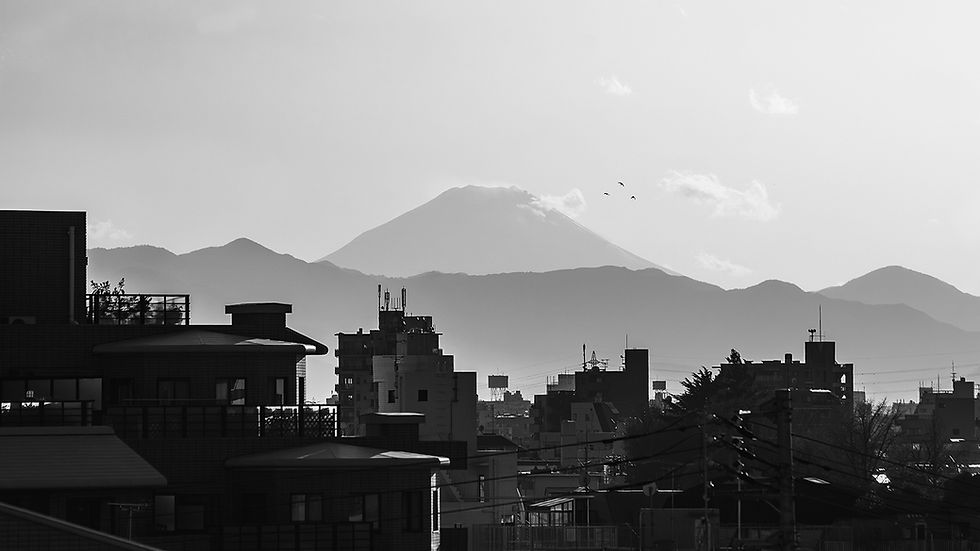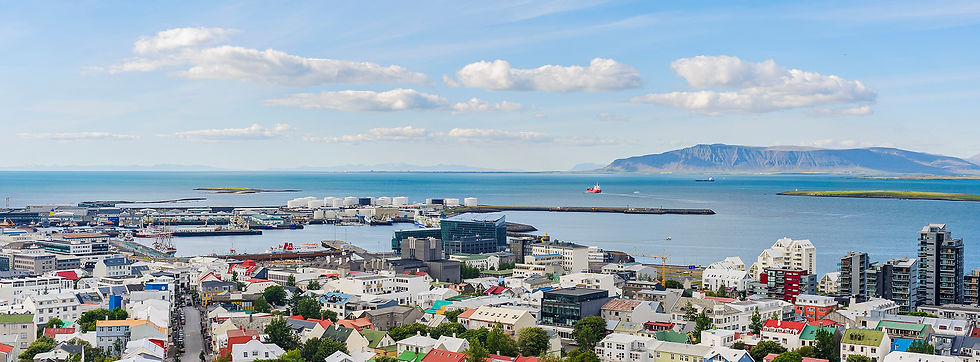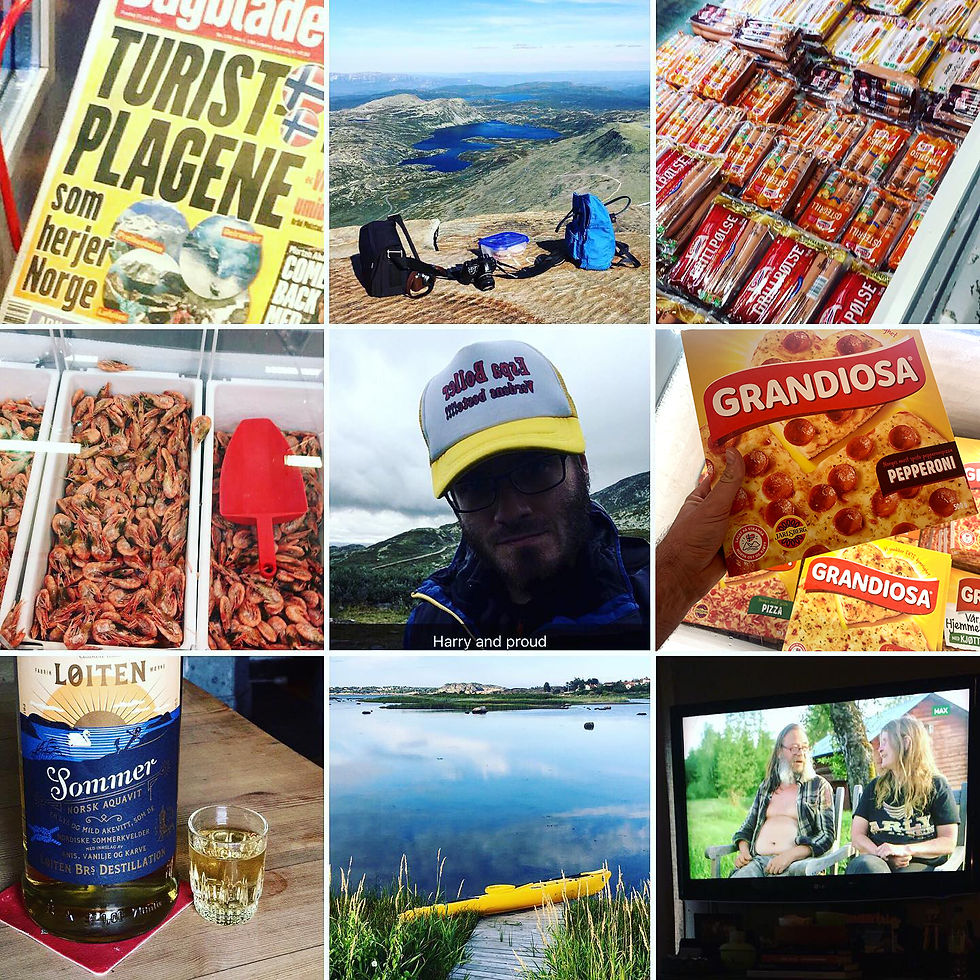Finding Meaning Beyond Touristic Hotspots
- Cederik Leeuwe

- Aug 29, 2024
- 6 min read

Cultures, reduced to memes:
Have you ever looked up a potential travel destination online? If so, you've likely noticed that the images of those places tend to look remarkably similar. Take Iceland, for instance. Search for it, and you'll undoubtedly be inundated with images of Kirkjufell, the picturesque mountain that has become a symbol of the country. Yet Iceland spans 100,000 square kilometers — three times the size of Belgium — and it’s certainly not as though Kirkjufell is the only breathtaking sight in this vast and diverse land. But, thanks to social media, certain locations become viral sensations, reducing entire countries to singular, stereotyped images.
In my eyes, these social media-famous locations start to lose their magic. They become memes, endlessly replicated and shared until their uniqueness dissolves. It's like reducing a country to a pre-packaged product, something easily consumable rather than a place full of depth and nuance. This obsession with capturing and reproducing these iconic spots feels so contrary to the spirit of travel—a profoundly human endeavor that should be about discovery and connection, not just ticking off boxes from a checklist of must-see attractions.

During my first trip to Japan (2010) I went to hotspots to confront my expectations with reality.
It was a necessary step in the shedding of preconception within the scope of a cultural decentration process.
As travelers, we’re often drawn to these iconic destinations, yet the reality upon arrival can be underwhelming. The crowds, the commercialization, and the feeling that the place has lost its authenticity in favor of catering to the masses can be disheartening. At the same time, we face societal pressure to visit these spots, regardless of how unappealing they’ve become. While I can accept a certain level of tourism in popular locations — it doesn’t bother me when the flow is manageable — my discomfort spikes when I find myself in hotspots that feel more like waiting in line at Disney Land. And let’s not even start on the environmental impact. Watching massive ferries disgorge thousands of visitors onto small, delicate villages makes my blood boil.
As photographers, this situation becomes even more frustrating. We end up trying to recreate the same image that has been shot millions of times before, hoping that somehow our version will stand out. But it’s a futile exercise —it stifles our creativity and sets expectations that are almost impossible to meet.
This mentality pushes us to approach travel as a checklist of experiences.
—things we "must do."
But is it really worth it?
For me, travel has always been more about living in a place than just visiting it. Between the ages of nine and eleven, I lived in Southeast Asia; a year in Singapore and I spent some time in Kuala Lumpur, Malaysia's capital city. These formative experiences acted as a sort of vaccine against culture shock, shaping how I travel today.
Me in South-East Asia (94-95) — Is there a more 90ies looking kid? (and 90ies point and shoot film photographs?)
Later, as a young adult, I spent eight months in Tokyo across various trips, immersing myself in the culture rather than racing through tourist attractions. I was never a tourist trying to cram a country’s highlights into a few days, nor was I ever a first-time backpacker in their twenties, expecting a life-altering epiphany. To me, those are two sides of the same coin. Instead, I've always focused on staying somewhere long enough to truly start understanding it.
One of my earliest self-published books, Fragmentations, documents my time in Japan and the process of cultural decentration I experienced there. It’s about shedding preconceptions and learning to see a place with fresh eyes until it feels almost mundane. Ultimately, I want to feel so accustomed to a place that it becomes a second home.
This perspective informed my travels to Iceland, where I spent a month and a half. Most of my time was in Reykjavik, where I remained in the care of local friends rather than chasing after Iceland’s natural wonders. If I did rent a car for five days to drive around, I still missed many of the “must-do” sights, simply and admittedly because I wasn’t aware of them at the time. In hindsight, I regret skipping some of these famous spots, but I wouldn’t trade the unique experience I had living like a local for a few photo ops. That time spent with Icelanders was far more valuable to me than simply witnessing black sand beaches.

Journeying and documenting.
Documenting the steps of my life, my journey through different cultures, and the people I meet holds deep significance for me. It’s more than just a way to preserve memories; it’s a means of understanding and connecting with the world. Every person I encounter, every place I visit, tells a story, and I feel compelled to capture those moments, to trace the threads that weave my life into the fabric of something greater. Each image or note becomes part of a larger narrative — a testament to where I’ve been and the impact others have had on shaping who I am.
Maybe that’s why I’ve never fully embraced landscape photography. While I appreciate natural beauty, I’m more drawn to the human and cultural elements of a place. My photography reflects this tension: I’m forever caught between the documentary and landscape genres. I can’t just rush through a country’s natural wonders and ignore the people and culture that make it come alive.
All of these experiences have shaped the way I approach travel today. I take my time, trying to resist the pull of tourist traps and focusing on seeing a place with clear, unclouded eyes — free from the thirst for exoticism that often drives travel. Instead of chasing the highlights, I look for the subtler, more enduring aspects of a destination.
Take Norway, for example:
My in-laws are Norwegian, so we drive up there every year. Sometimes several times a year. The part of the country where they live doesn’t attract many tourists; most visitors flock to the west coast for sights like Preikestolen, Trolltunga, Bergen, and up north, the Lofoten Islands. But, just like Iceland, Norway is vast and beautiful far beyond its famous landmarks.
The less touristy south-eastern Norway doesn't disappoint either.
When I drive through Norway, taking my children on road trips further out in the country than the family hytte's location in relatively tranquil Telemark Fylke, I’m often struck by a sense of discomfort when I near these western well-known spots. Coming up towards the Fjords of Vestland, the traffic increases, and the roads become literally clogged with foreign license plates and vehicles too wide for the narrow mountain roads (Norwegians do complain a lot about German drivers in their motorhomes driving 20 under the limit and never letting faster traffic pass — along with stealing all their fish and never spending a dime anywhere — but that's veering into unfair stereotype territory).
This ubiquity of tourists, everywhere near the hotspots robs something from the experience. Perhaps it's partly a matter of hubris — as I might feel like I belong more because my spouse is Norwegian and that I somewhat speak the language — but it's also something deeper. It feels like the magic of the place is diminished when it becomes just another stop on the tourist trail.
So whenever I drive too deep into the western parts, I often head back east, seeking out remote and quiet corners of the country. These places are just as beautiful and photogenic as the famous spots, but they retain a sense of attainable solitude and authenticity. They still attract tourists of course (often local tourism), but in more sustainable ways. Whenever I share images from these trips, I’m deliberately vague about the locations (perhaps only tagging the general region / national park / fylke) — as I want to preserve the anonymity of these places, keeping them safe from the doom of a random and uncontrollable influx of tourists that would change them forever.

Testament to my cultural adaptation. Notice the newspaper from 2018 top left which titles :
"The tourist plagues that ravage Norway"
Don't tell anyone, but secretly, I'm a hobbit.
In the end, that’s what I seek — transforming the foreign into the familiar. I want to immerse myself in the rhythm of a place, understanding it from the inside out rather than skimming its surface through touristic highlights. But there’s nothing smug in this approach; it's simply that I’ve realized I don’t have an insatiable wanderlust or an urge to explore just for the sake of it. In fact, I’d be perfectly content staying home.
Travel, for me, has always been something that happens rather than something I actively pursue
—whether for professional reasons or personal ones.
Places I would never had gone to if it weren't for my work.
When I was a child, my dad moved to Southeast Asia for work, so I followed. My trip to Iceland? That came about through an invitation from Icelandic acquaintances. The first time I visited Japan, it was because two friends invited me on a trip, and afterward, I returned on my own because I was already somewhat familiar with the place. Burkina-Faso? I went there shooting a documentary. As for my road trips in Norway? Well, it's my spouse’s home country and likely where our family will settle in the future.
In a way, I’m a bit like Bilbo — I don’t seek out these adventures, but when they come, I welcome them, as long as they’re rooted in something more meaningful than the mere consumerist urge to rush through a place’s touristic hotspots — I'm simply someone who needs a nudge from fate (or a friend) to get out and about.





























Comments